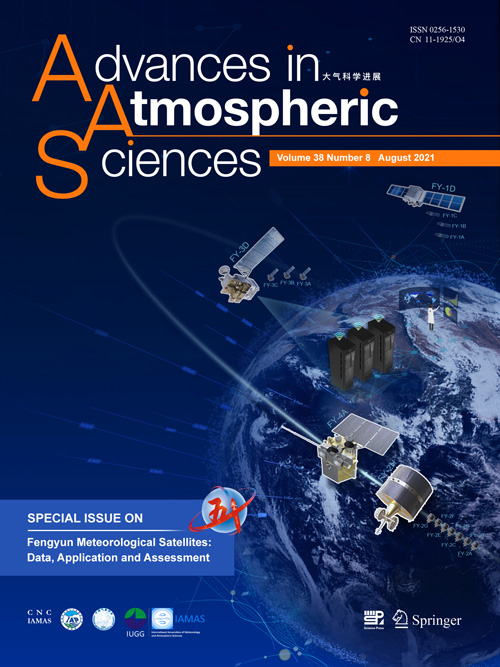China's first meteorological satellite launched in 1988. It was named Fengyun, which roughly translates to "wind and cloud". Since then, 17 more Fengyun meteorological satellites were launched, with seven still in operation, to monitor Earth's wind, clouds and, more recently, extreme weather events such as hurricanes and wildfires. With more than 30 years of Earth observational data freely available to international partners, the Fengyun Meteorological Satellite program works as part of Earth's operational observation system, along with the United States' National Oceanic and Atmospheric Administration satellites and Europe's polar orbiting meteorological satellite series to provide a more complete picture weather events and their global impacts.
To highlight the Fengyun satellites' data applications and to encourage further research among domestic and international collaborators,
Advances in Atmospheric Sciences published a
special issue titled, "Fengyun Meteorological Satellites: Data, Application and Assessment," on 10 July, 2021. It's the first time international communities' evaluation and application of Fengyun satellites are collectively published in a journal. Scientists with the Institute of Atmospheric Physics contributed to the special issue with their
analysis of differences of cloud top height between satellites and ground-based radar.
The special issue is a culmination of research initiated at a 2019 conference for international users to develop a comprehensive, integrated approach for exchanging ideas and promoting global applications of the satellite data, according to Peng ZHANG, the deputy director of the National Satellite Meteorological Center of the China Meteorological Administration. More than 200 people representing more than 30 countries attended. Since then, international users have applied the data in various research projects, and ZHANG said the intention is for collaborations to grow as the data capabilities expand.

The cover of the special issue shows both geostationary and polar orbiting FY satellites, all of which are circling the full disk image of Earth captured by the FY-4A (center) satellite. Extensive Earth observation data from FY satellites are continuously received and archived in the National Satellite Meteorological Center of China database, which are available to global users. (Advances in Atmospheric Sciences)
"In the last decade, great efforts have been made to improve the performance of the satellites and their on-board instrumentation," said ZHANG, who organized the special issue. "With extensive, multi-modal observational capabilities on Fengyun satellites, international communities have and will continue to make use of this data."
Such capabilities include image navigation, radiometric calibration, multiband optical imaging, atmospheric sounding, microwave imaging, hyperspectral trace gas detection, full-band radiation budget measuring and more -- in short, an extensive list of ways to monitor weather events and atmospheric changes of Earth. ZHANG also co-authored a
data description paper, which summarizes not only the data available, but how international users can access it.
The critical factor, Zhang said, is in how these data can be applied. The rest of the special issue features work undertaken in each of the 2019 conference's sections: retrieval algorithms, used to interpret raw data; products validation, which cross-references satellite data with earth-based observations; numerical weather predictions, or how to predict future weather using models of current atmospheric conditions; and climate and environmental predictions, which involves using satellite data to estimate surface effects of atmospheric changes.
On 5 July, Fengyun 3E, the world's first early morning orbit weather satellite was launched, and it will improve global weather forecast by filling in the data gap in a certain time of a day and assist in achieving 100 percent global data coverage every six hours.
"Fengyun satellites will continue to play an important role in Earth sciences in the future, especially as the international community continues to collaborate and apply this data to research that benefits us all," ZHANG said. "The new epoch for comprehensive Earth observations has begun."
Media contact: Ms. LIN Zheng, jennylin@mail.iap.ac.cn

